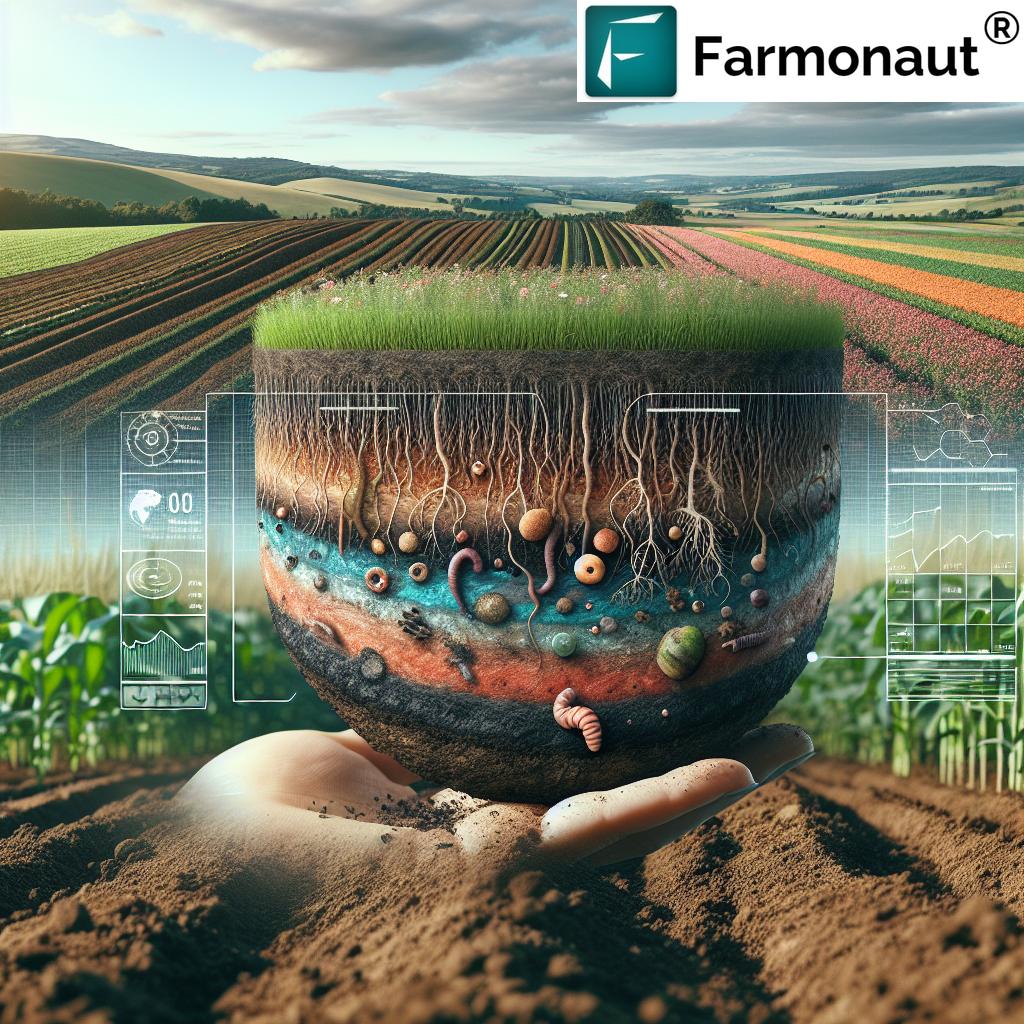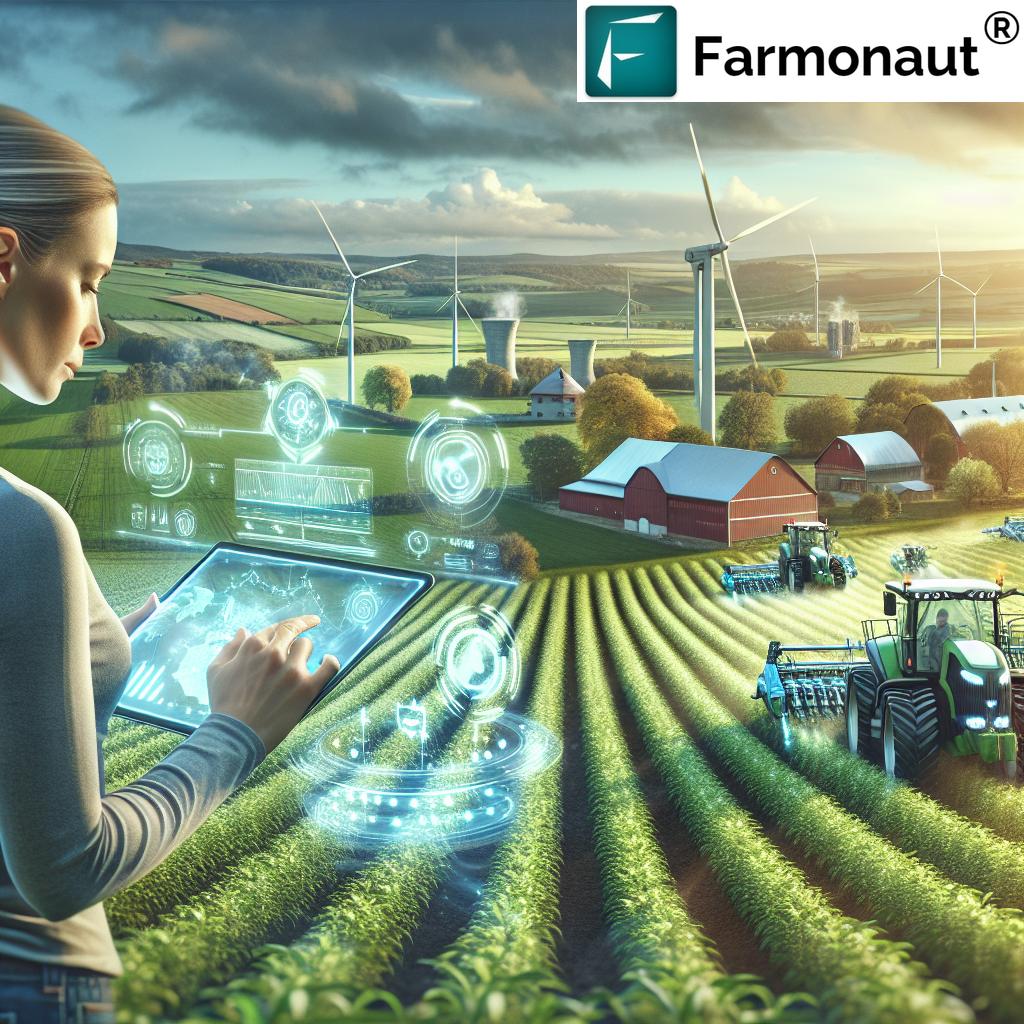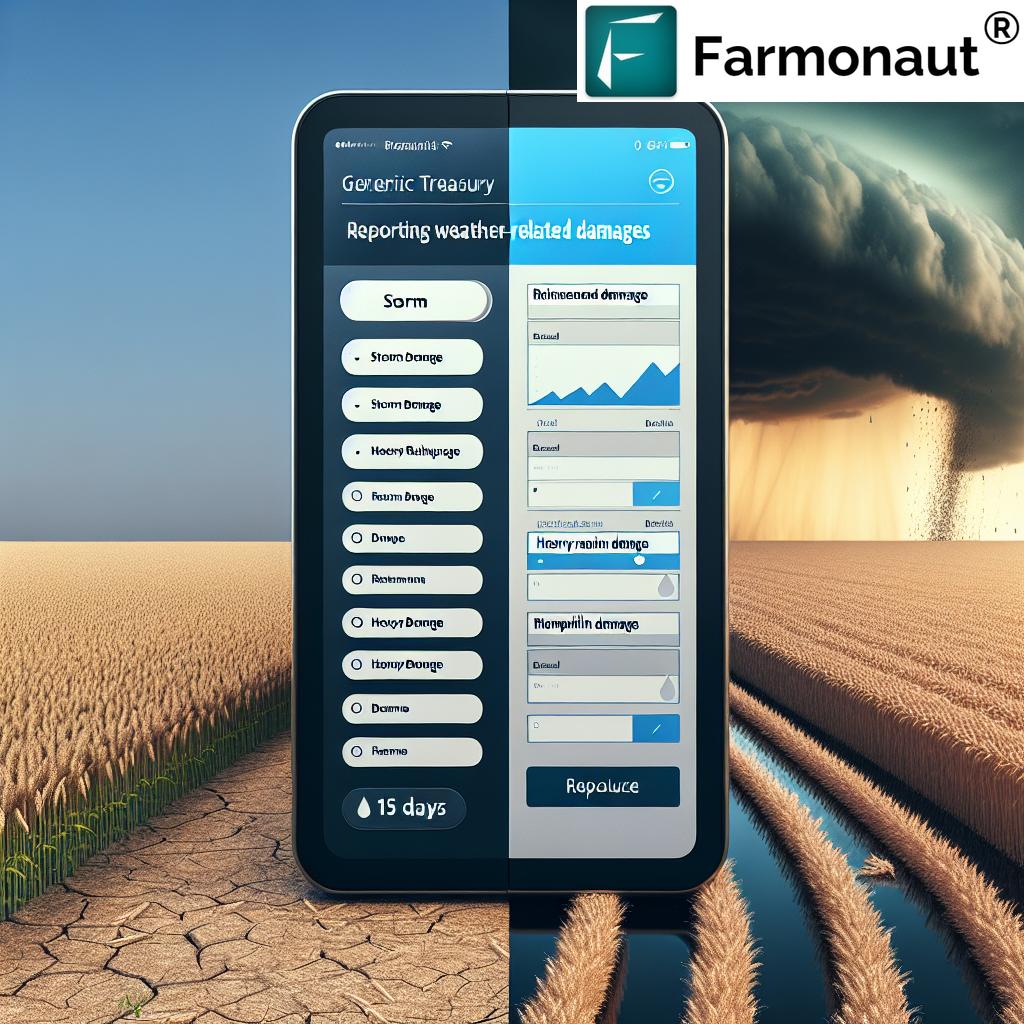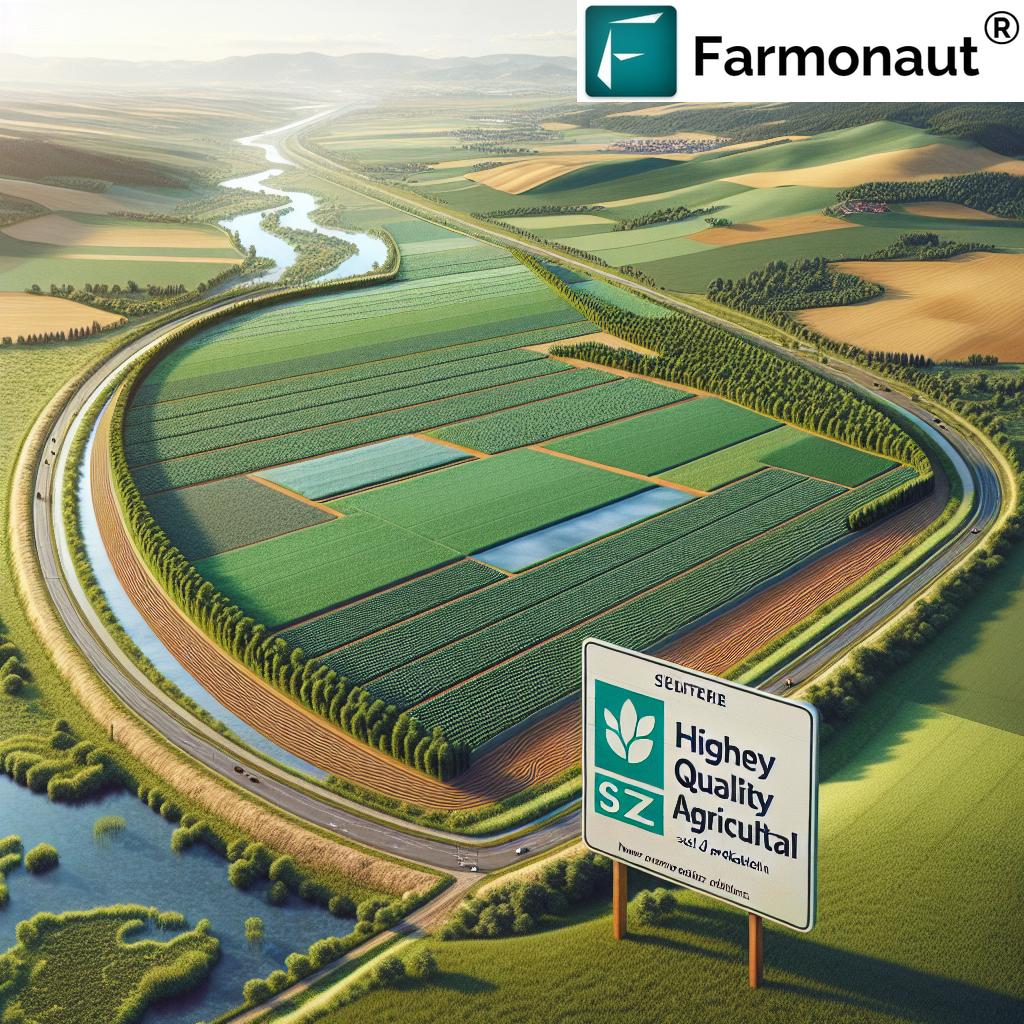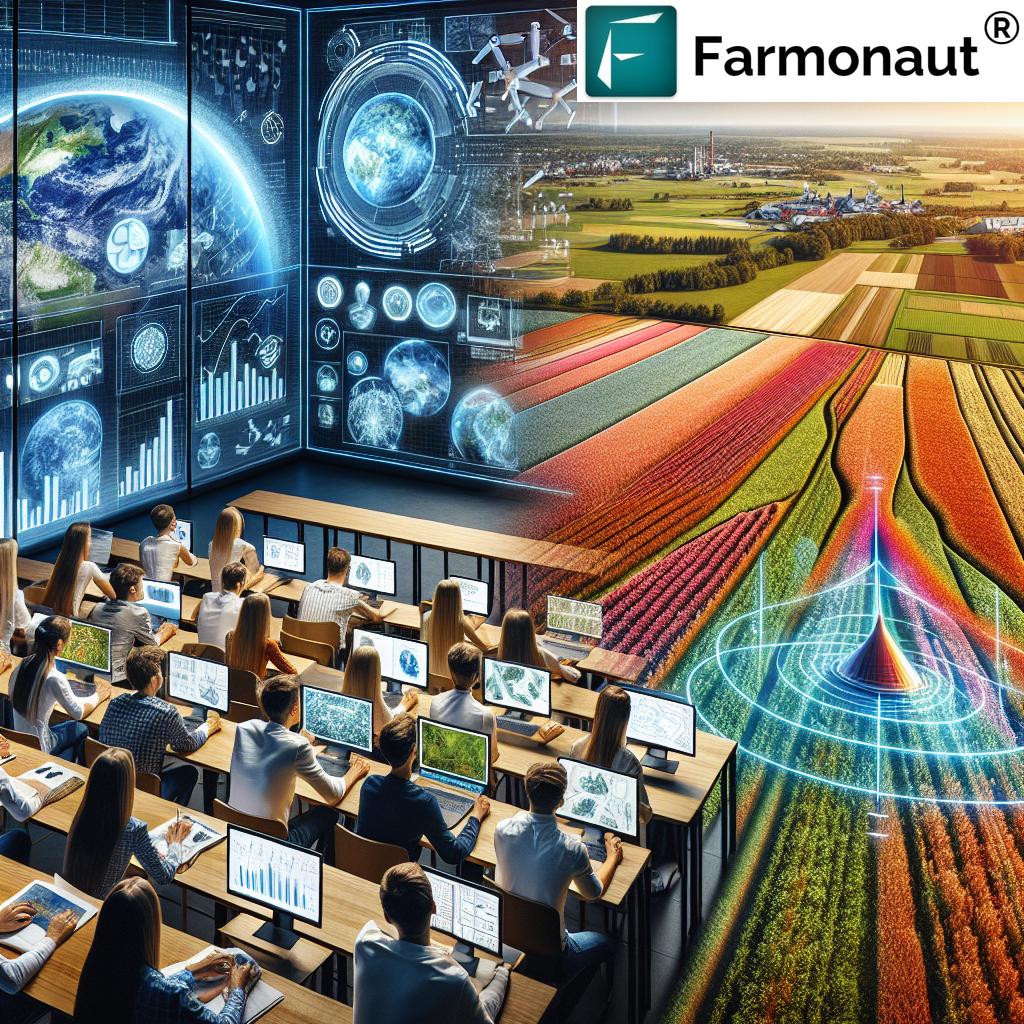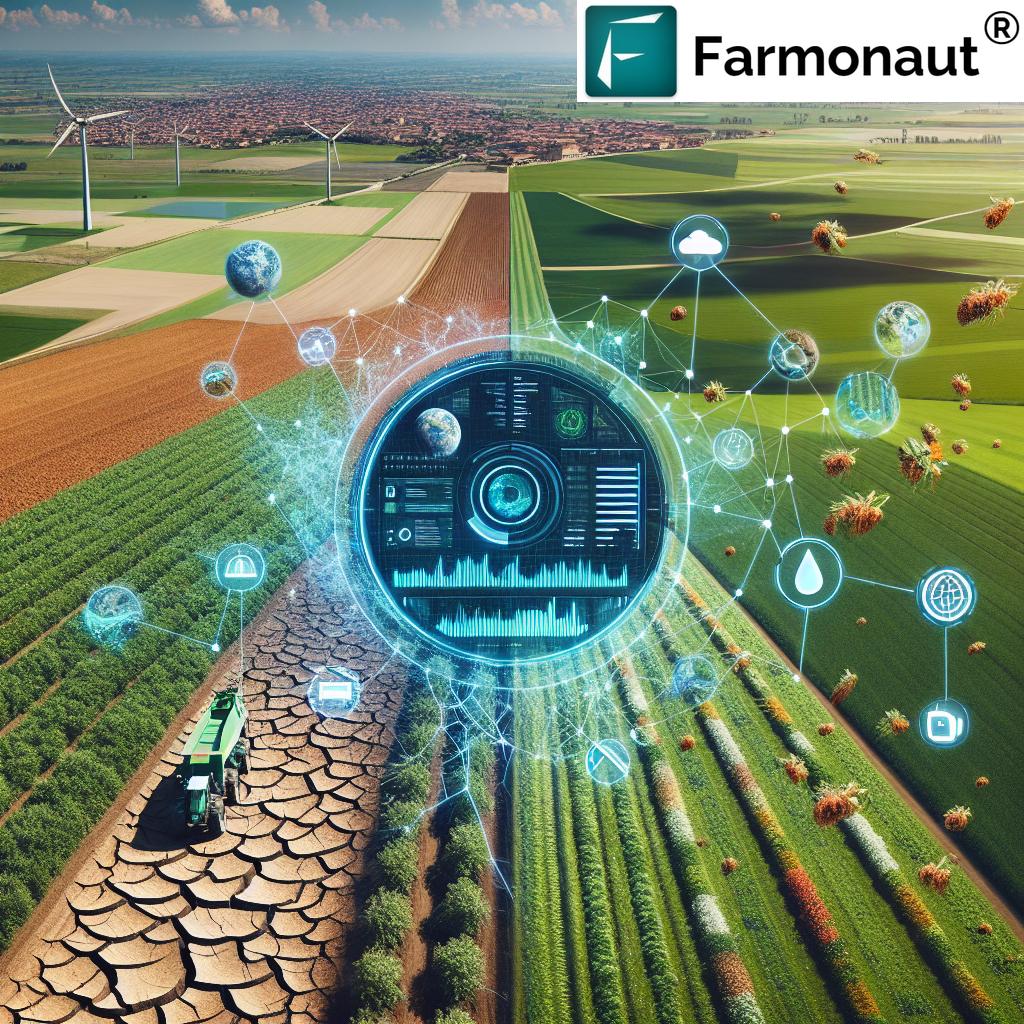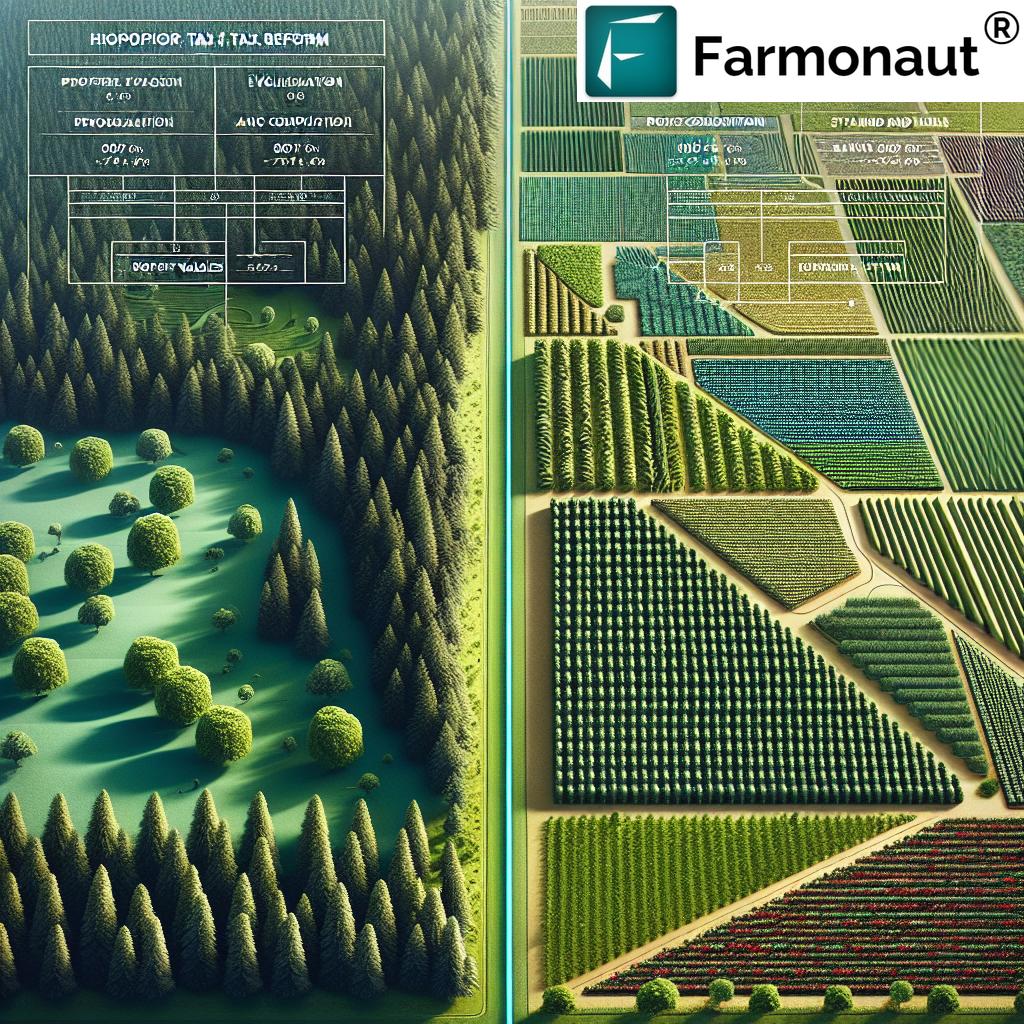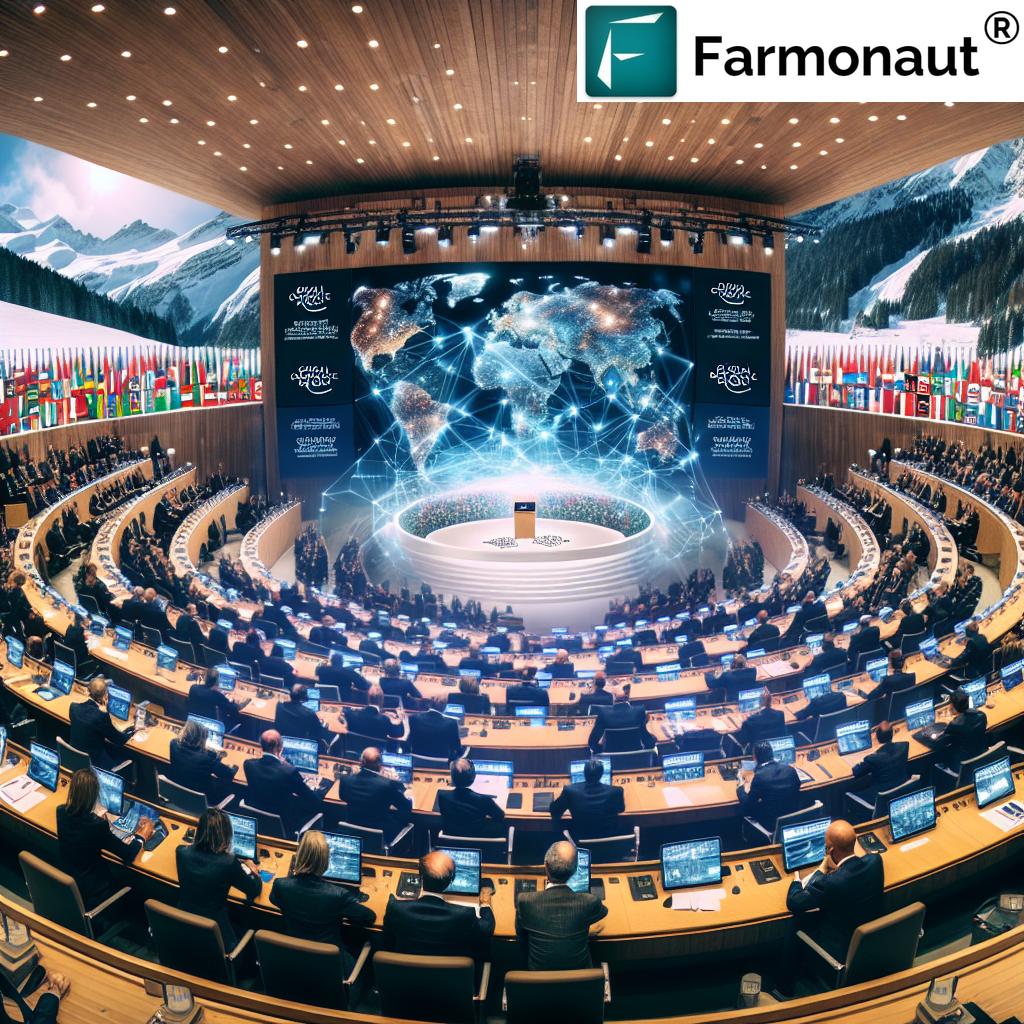Sustainable Agriculture in Russia: Pioneering Climate-Smart Practices for a Carbon-Neutral Future
“Russia’s sustainable forestry management contributes to absorbing approximately 2.5 billion tons of CO2 annually.”
In the face of global climate change, Russia has emerged as a pivotal player in the quest for sustainable agriculture and carbon neutrality. As we delve into the nation’s groundbreaking initiatives and climate-smart practices, we’ll explore how Russia is setting a new standard for environmental stewardship in the agricultural sector. From innovative farming techniques to cutting-edge technologies, we’ll uncover the multifaceted approach that’s propelling Russia towards a greener, more sustainable future.
Russia’s Commitment to Climate Action
At the recent COP29 summit in Baku, Azerbaijan, Russian Prime Minister Mikhail Mishustin made a bold declaration: Russia aims to achieve carbon neutrality by 2060. This ambitious goal underscores the nation’s proactive stance on climate change mitigation. But what does this mean for Russian agriculture, and how is the country planning to transform its farming practices to meet these lofty objectives?
Let’s break down the key components of Russia’s climate strategy:
- Enhancing energy efficiency across all sectors
- Promoting the development of electric transportation
- Implementing sustainable practices in forestry and agriculture
- Reducing greenhouse gas emissions by over 50% compared to 1990 levels
- Transitioning to clean, low-emission energy sources
These initiatives form the backbone of Russia’s climate action plan, with a particular focus on revolutionizing agricultural practices to align with global sustainability goals.
The Role of Sustainable Agriculture in Russia’s Climate Strategy
Sustainable agriculture practices are at the forefront of Russia’s efforts to combat climate change. By adopting climate-smart farming techniques, the country is not only reducing its carbon footprint but also ensuring food security for future generations. Let’s explore some of the key practices being implemented:
Precision Agriculture Technologies
Precision agriculture is revolutionizing farming in Russia. By leveraging advanced technologies, farmers can optimize resource use and minimize environmental impact. Here’s how precision agriculture is making a difference:
- Satellite-based crop monitoring for accurate resource allocation
- GPS-guided machinery for precise planting and harvesting
- Soil sensors for optimized irrigation and fertilization
- Drone technology for real-time crop health assessment
These technologies not only improve yields but also significantly reduce greenhouse gas emissions by minimizing waste and overuse of resources.
Low-Emission Farming Techniques
Russia is actively promoting low-emission farming techniques to reduce the agricultural sector’s carbon footprint. Some of these practices include:
- Conservation tillage to minimize soil disturbance and carbon release
- Crop rotation to improve soil health and reduce the need for synthetic fertilizers
- Cover cropping to prevent soil erosion and enhance carbon sequestration
- Efficient livestock management to reduce methane emissions
By implementing these techniques, Russian farmers are not only reducing emissions but also improving soil health and biodiversity.
Renewable Energy in Agriculture
The integration of renewable energy sources in agricultural operations is gaining momentum in Russia. From solar-powered irrigation systems to wind-powered farm equipment, the shift towards clean energy is transforming the sector. This transition not only reduces reliance on fossil fuels but also contributes to the overall decarbonization of the agricultural industry.
Explore Farmonaut’s innovative solutions for sustainable agriculture: Web App | Android App | iOS App
Climate-Smart Agriculture: A Closer Look
Climate-smart agriculture (CSA) is a comprehensive approach that addresses the interlinked challenges of food security and climate change. In Russia, CSA is being implemented through various innovative practices and technologies. Let’s examine some of the key components:
Soil Carbon Sequestration
Enhancing soil carbon sequestration is a crucial aspect of Russia’s climate-smart agriculture strategy. By increasing the organic matter content in soils, farmers can not only improve soil health but also remove significant amounts of CO2 from the atmosphere. Some methods being employed include:
- No-till farming to minimize soil disturbance
- Incorporation of crop residues into the soil
- Use of biochar as a soil amendment
- Agroforestry practices to increase carbon storage in agricultural landscapes
Water Management and Conservation
Efficient water management is essential for sustainable agriculture, especially in the face of climate change. Russia is implementing various water conservation techniques, including:
- Drip irrigation systems for precise water delivery
- Rainwater harvesting and storage
- Use of drought-resistant crop varieties
- Implementation of water-efficient farming practices
These measures not only conserve water but also reduce energy consumption associated with water pumping and distribution.
Crop Diversification and Resilience
To enhance agricultural resilience in the face of changing climate patterns, Russia is promoting crop diversification. This approach includes:
- Cultivation of climate-adapted crop varieties
- Integration of legumes and other nitrogen-fixing plants into crop rotations
- Promotion of mixed cropping systems
- Development of agroforestry systems
By diversifying crops, farmers can reduce the risk of total crop failure due to extreme weather events and improve overall farm productivity.
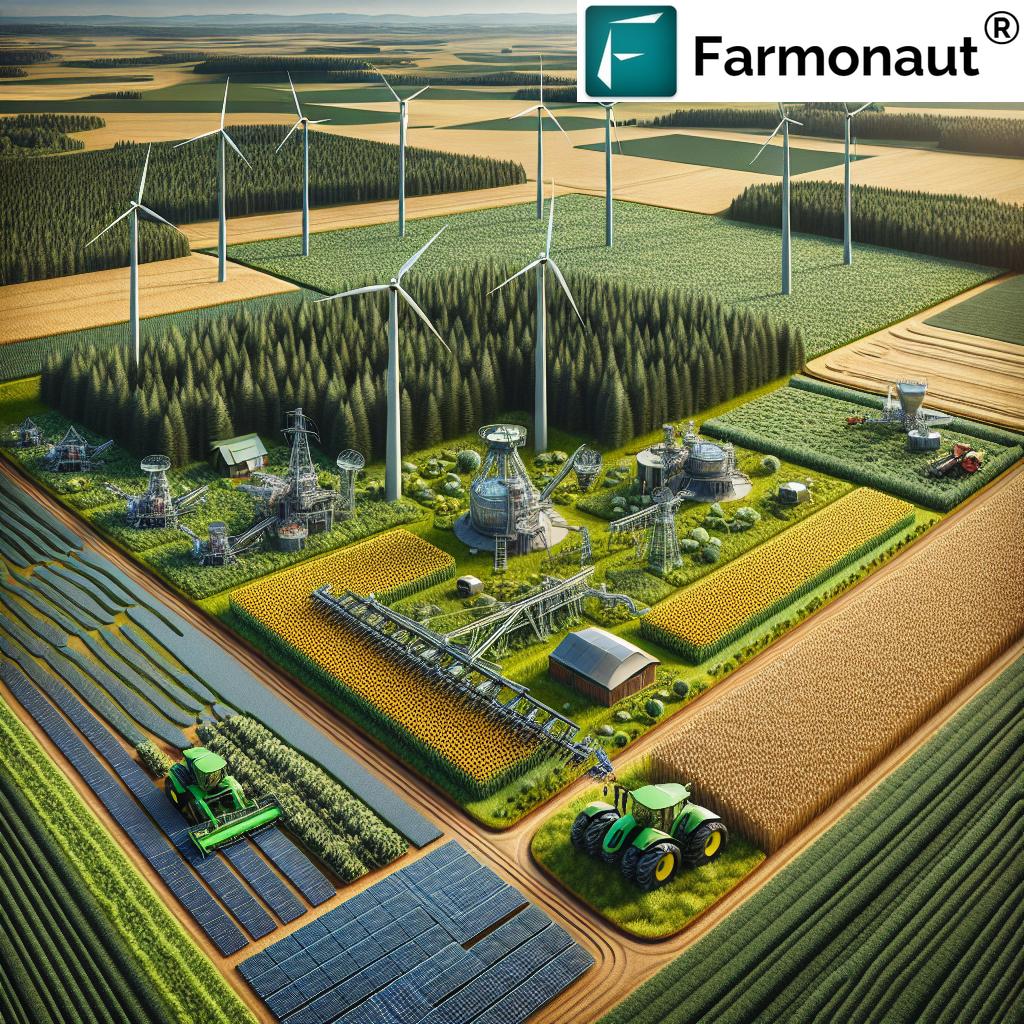
The Role of Technology in Russian Agriculture
Technology plays a crucial role in Russia’s transition to sustainable agriculture. From AI-powered decision support systems to blockchain-based supply chain management, innovative technologies are transforming the agricultural landscape. Let’s explore some of the key technological advancements:
AI and Machine Learning in Agriculture
Artificial Intelligence (AI) and Machine Learning (ML) are revolutionizing farming practices in Russia. These technologies are being used for:
- Predictive analytics for crop yield forecasting
- Pest and disease detection using image recognition
- Automated irrigation scheduling based on real-time data
- Optimized resource allocation through data-driven decision making
Internet of Things (IoT) in Farming
The Internet of Things (IoT) is transforming Russian agriculture by connecting various farming devices and systems. IoT applications in agriculture include:
- Smart sensors for soil moisture and nutrient monitoring
- Automated climate control systems in greenhouses
- Livestock tracking and health monitoring
- Remote equipment monitoring and predictive maintenance
These IoT solutions enable farmers to make data-driven decisions and optimize their operations for maximum efficiency and sustainability.
Blockchain for Agricultural Supply Chains
Blockchain technology is being leveraged to enhance transparency and traceability in agricultural supply chains. Some applications include:
- Tracking the origin and journey of agricultural products
- Ensuring food safety and quality through immutable record-keeping
- Facilitating fair trade practices and reducing fraud
- Streamlining cross-border transactions and reducing paperwork
By implementing blockchain solutions, Russia is not only improving the efficiency of its agricultural sector but also building trust among consumers and international trade partners.
“Climate-smart agriculture practices in Russia have reduced greenhouse gas emissions by 30% in targeted regions since 2015.”
Sustainable Forestry Management in Russia
Russia’s vast forest resources play a crucial role in the country’s climate strategy. With forests covering more than 45% of the nation’s land area, sustainable forestry management is key to achieving carbon neutrality. Here’s how Russia is leveraging its forests for climate action:
Carbon Sequestration through Afforestation
Russia is implementing large-scale afforestation programs to enhance carbon sequestration. These efforts include:
- Planting new forests on previously non-forested land
- Reforestation of areas affected by wildfires or logging
- Creation of urban forests to improve air quality in cities
- Promotion of agroforestry systems that integrate trees into agricultural landscapes
These initiatives not only absorb CO2 but also provide additional benefits such as biodiversity conservation and soil erosion prevention.
Sustainable Timber Harvesting
To ensure the long-term health of its forests, Russia is implementing sustainable timber harvesting practices. These include:
- Selective logging to maintain forest structure and biodiversity
- Implementation of reduced-impact logging techniques
- Certification of sustainably managed forests
- Use of advanced technology for precise and efficient timber extraction
By adopting these practices, Russia is balancing economic needs with environmental conservation, ensuring that its forests continue to serve as carbon sinks for generations to come.
Forest Fire Prevention and Management
Climate change has increased the risk of forest fires in Russia. To address this challenge, the country is implementing comprehensive fire prevention and management strategies, including:
- Advanced early warning systems using satellite technology
- Creation of firebreaks and fuel reduction zones
- Training and equipping specialized forest firefighting units
- Community engagement in fire prevention and reporting
These measures not only protect valuable forest resources but also prevent the release of massive amounts of CO2 into the atmosphere during wildfires.
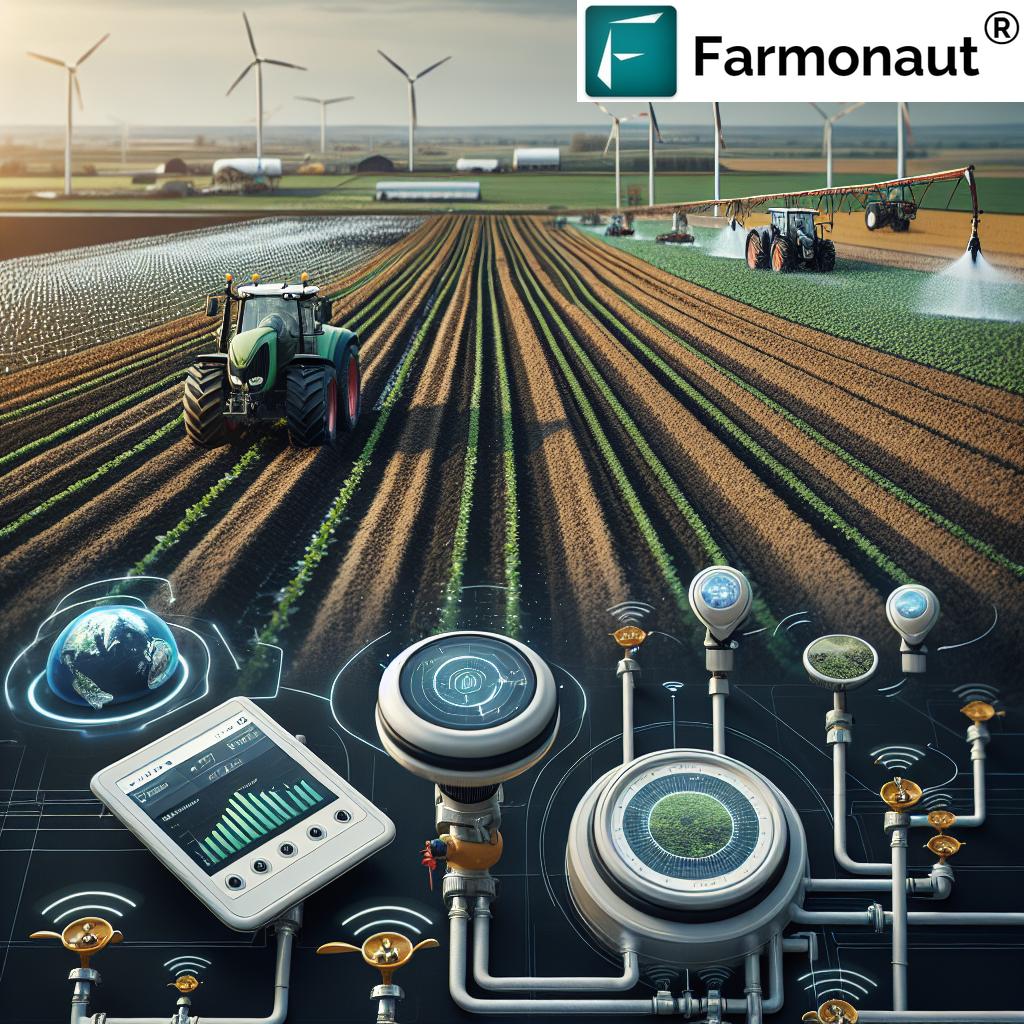
Electric Vehicles in Russian Agriculture
The adoption of electric vehicles (EVs) in agriculture is an emerging trend in Russia’s sustainable farming practices. This shift towards electrification is contributing to the reduction of greenhouse gas emissions in the agricultural sector. Let’s explore how EVs are being integrated into Russian farming:
Electric Farm Machinery
Russia is seeing a gradual increase in the use of electric farm machinery, including:
- Electric tractors for field operations
- Battery-powered utility vehicles for on-farm transportation
- Electric irrigation pumps and systems
- Autonomous electric robots for planting and harvesting
These electric alternatives not only reduce emissions but also offer benefits such as lower operating costs and reduced noise pollution.
Charging Infrastructure Development
To support the adoption of electric vehicles in agriculture, Russia is investing in charging infrastructure development. This includes:
- Installation of charging stations at farms and agricultural facilities
- Development of solar-powered charging solutions for remote areas
- Integration of smart grid technologies for efficient power management
- Collaboration with energy providers to ensure reliable power supply
By building a robust charging network, Russia is paving the way for widespread adoption of electric vehicles in the agricultural sector.
Government Incentives for EV Adoption
The Russian government is implementing various incentives to encourage the adoption of electric vehicles in agriculture. These include:
- Tax breaks for farmers investing in electric farm machinery
- Subsidies for the purchase of electric agricultural vehicles
- Grants for research and development of EV technology in agriculture
- Support for domestic manufacturing of electric farm equipment
These incentives are crucial in accelerating the transition to electric vehicles in Russian agriculture, contributing to the nation’s overall climate goals.
Challenges and Opportunities in Achieving Climate Goals
While Russia has made significant strides in sustainable agriculture and climate action, the path to carbon neutrality is not without challenges. However, these challenges also present unique opportunities for innovation and growth. Let’s examine some of the key issues and potential solutions:
Balancing Economic Growth with Emissions Reduction
One of the primary challenges for Russia is balancing economic development with emissions reduction targets. This involves:
- Investing in clean technologies without compromising economic competitiveness
- Transitioning energy-intensive industries to low-carbon alternatives
- Developing new economic opportunities in the green sector
- Ensuring a just transition for workers in carbon-intensive industries
By viewing these challenges as opportunities for innovation, Russia can position itself as a leader in sustainable economic development.
Scaling Up Renewable Energy Sources
While Russia has made progress in integrating renewable energy into its energy mix, there’s still significant room for growth. Opportunities in this area include:
- Expanding solar and wind power capacity in suitable regions
- Developing advanced energy storage solutions
- Investing in smart grid technologies for efficient energy distribution
- Exploring the potential of hydrogen as a clean energy carrier
By diversifying its energy portfolio, Russia can reduce its dependence on fossil fuels and create a more resilient energy system.
Enhancing International Cooperation
Addressing climate change requires global collaboration. Russia has the opportunity to enhance its international cooperation through:
- Participating in global climate initiatives and research programs
- Sharing best practices in sustainable agriculture and forestry management
- Collaborating on cross-border climate adaptation projects
- Contributing to climate financing for developing nations
By taking a leadership role in international climate action, Russia can strengthen its global standing and contribute to collective efforts against climate change.
Leverage Farmonaut’s API for advanced agricultural insights: API | API Developer Docs
Climate-Smart Agriculture Practices in Russia: Emissions Reduction Potential
| Practice | Estimated CO2 Reduction (tons/year) | Implementation Cost (USD/hectare) | Adoption Rate (%) |
|---|---|---|---|
| Precision Agriculture | 2,500,000 | 150-300 | 35 |
| Low-Tillage Farming | 1,800,000 | 50-100 | 45 |
| Crop Rotation | 1,200,000 | 20-50 | 60 |
| Agroforestry | 3,000,000 | 200-400 | 15 |
The Future of Sustainable Agriculture in Russia
As we look towards the future, it’s clear that sustainable agriculture will play a pivotal role in Russia’s journey towards carbon neutrality. The continued integration of advanced technologies, coupled with innovative farming practices, will shape the agricultural landscape in the coming decades. Here are some key trends and predictions:
Increased Adoption of AI and Robotics
We expect to see a significant increase in the use of AI and robotics in Russian agriculture. This will include:
- Autonomous farming robots for planting, weeding, and harvesting
- AI-powered decision support systems for farm management
- Drone swarms for precise crop monitoring and treatment
- Machine learning algorithms for predictive maintenance of farm equipment
These technologies will not only improve efficiency but also contribute to emissions reduction by optimizing resource use.
Vertical Farming and Urban Agriculture
As urbanization continues, we anticipate a rise in vertical farming and urban agriculture initiatives in Russian cities. This trend will involve:
- Development of high-tech vertical farms in urban areas
- Integration of agriculture into urban planning and architecture
- Community-supported agriculture programs in cities
- Rooftop gardens and urban greenhouses for local food production
These initiatives will reduce transportation emissions associated with food distribution while enhancing food security in urban areas.
Biotechnology and Climate-Resilient Crops
Advances in biotechnology will play a crucial role in developing climate-resilient crops suited to Russia’s diverse climatic conditions. This will include:
- Development of drought-tolerant crop varieties
- Genetic editing for enhanced pest and disease resistance
- Creation of crops with improved nutritional profiles
- Biofortification to address micronutrient deficiencies
These advancements will ensure food security in the face of changing climate patterns while reducing the need for chemical inputs.
Conclusion: Russia’s Path to Carbon-Neutral Agriculture
As we’ve explored throughout this comprehensive analysis, Russia is making significant strides towards sustainable agriculture and carbon neutrality. From innovative farming practices to cutting-edge technologies, the nation is pioneering climate-smart solutions that promise to transform its agricultural sector.
The commitment to reducing greenhouse gas emissions, enhancing energy efficiency, and promoting sustainable forestry management demonstrates Russia’s dedication to addressing the global climate crisis. By leveraging its vast natural resources and embracing technological innovation, Russia is not only working towards its own climate goals but also contributing to global efforts in combating climate change.
As we look to the future, the continued integration of precision agriculture technologies, renewable energy sources, and sustainable farming practices will be crucial in realizing Russia’s vision of a carbon-neutral agricultural sector. The challenges ahead are significant, but so are the opportunities for growth, innovation, and leadership in sustainable development.
By fostering international cooperation, investing in research and development, and supporting farmers in the transition to climate-smart practices, Russia is positioning itself as a key player in the global fight against climate change. As these initiatives continue to evolve and expand, we can look forward to a future where Russian agriculture not only feeds the nation but also serves as a model for sustainable food production worldwide.
The path to carbon neutrality is complex and demanding, but with continued commitment and innovation, Russia is well-positioned to achieve its ambitious climate goals and contribute to a more sustainable future for all.
Frequently Asked Questions (FAQ)
- What is Russia’s target for achieving carbon neutrality?
Russia aims to achieve carbon neutrality by 2060, as announced at the COP29 summit in Baku, Azerbaijan. - How has Russia reduced its greenhouse gas emissions?
Russia has reduced its greenhouse gas emissions by over 50% compared to 1990 levels through various initiatives, including enhancing energy efficiency and promoting sustainable practices in forestry and agriculture. - What role do forests play in Russia’s climate strategy?
Russia’s vast forest resources absorb over one billion tons of CO2 equivalent each year, playing a crucial role in the nation’s carbon absorption efforts. - What are some key sustainable agriculture practices being implemented in Russia?
Key practices include precision agriculture technologies, low-emission farming techniques, crop diversification, and the integration of renewable energy sources in agricultural operations. - How is Russia promoting electric vehicles in agriculture?
Russia is encouraging the adoption of electric farm machinery, developing charging infrastructure, and offering government incentives for farmers to invest in electric agricultural vehicles. - What challenges does Russia face in achieving its climate goals?
Major challenges include balancing economic growth with emissions reduction, scaling up renewable energy sources, and enhancing international cooperation in climate action. - How is technology transforming Russian agriculture?
Technologies such as AI, machine learning, IoT, and blockchain are being leveraged to optimize farming practices, improve resource management, and enhance supply chain transparency in Russian agriculture. - What is climate-smart agriculture, and how is Russia implementing it?
Climate-smart agriculture is an approach that addresses food security and climate change challenges simultaneously. Russia is implementing it through practices such as soil carbon sequestration, efficient water management, and crop diversification. - How is Russia managing its forests sustainably?
Russia is implementing sustainable forestry management through afforestation programs, sustainable timber harvesting practices, and comprehensive forest fire prevention and management strategies. - What future trends can we expect in Russian sustainable agriculture?
Future trends include increased adoption of AI and robotics in farming, growth in vertical farming and urban agriculture, and advancements in biotechnology for developing climate-resilient crops.








